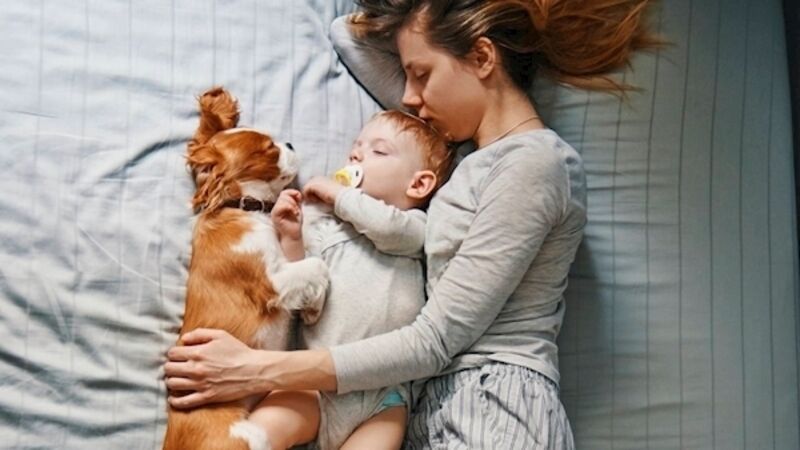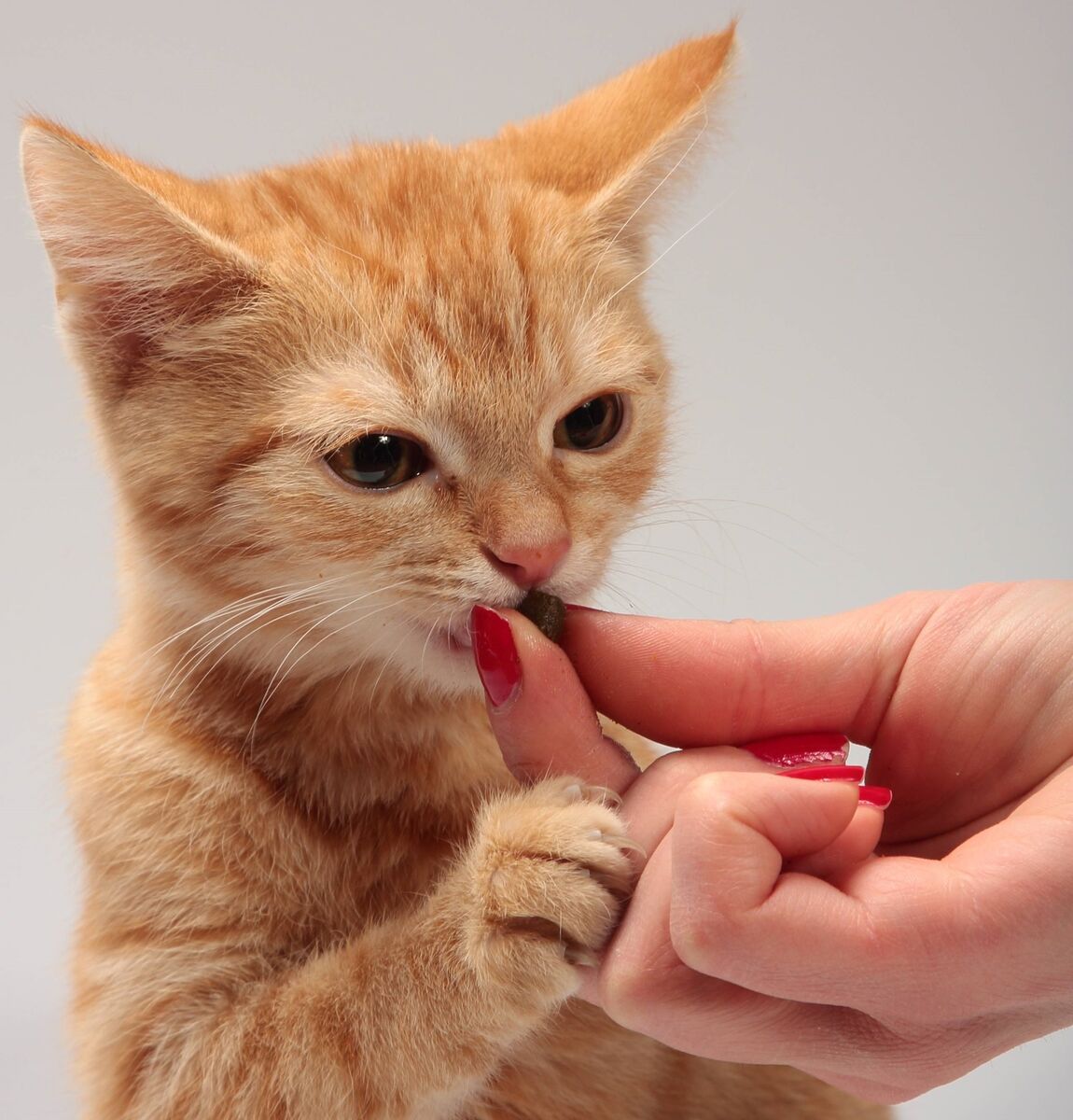In the doghouse: Unleashing a few home truths about pets and hygiene

unleashes a few home truths about pets and hygiene.
This feature was inspired by the most disturbing video I have ever seen on YouTube (unexpected porn’ gifs included). It showed a mighty accident by a large dog captured on home security cameras being dutifully “vacuumed” by an automatic Roomba robotic floor cleaner on its scheduled run. I’ll leave that to your imagination — the determined little machine cheerfully painting an open-plan area of hard-floors and rugs with dog toffee for ten minutes straight — it was, in short, the total break-down of civilised, domestic life.
The thing is, we can see that catastrophic mess — it’s what you don’t see in terms of pet-borne dirt and disease that could come back to bite you.
Animals hold a special place in many households. “They are faaaaaaaaaamily,” we croon, gripping Snuffy to our beating breast. But what two-legged family member would get away with those manners? Angry, disgruntled, emotional cats can lose their marbles.
My old moggy James took to depositing the molten bad stuff down between the skirting and the wall with startling accuracy when I moved my husband into the house. My dogs wash their backsides meticulously by tongue with revolting regularity and then spring up on my lap to greet me with a delighted lap to the face. There’s no ignoring the menace of protozoan parasites.
BOWLED OVER
Dogs relish feline and agricultural sandwiches of faeces (pica) and given any excuse, will roll in the muck of other animals. This is all purely instinctual, but place that dog into your sacred nest and these acceptable quirks becoming slightly unsettling. It’s time to take a more forensic look at pets and hygiene if these precious relationships are going to work.
A recent study in the school of Animal Science at Hartpury College in Gloucestershire has revealed some startling truths about a banal but necessary inclusion in any pet owner’s home — the water bowl. Lecturer Aisling Carroll and BSc Bioveterinary Science graduate Coralie Wright investigated how much the build-up of bacteria could be affected by the material a bowl is made from and how often it is cleaned.
It turns out that stainless-steel bowls are the least offensive, showing the poorest breeding of the horrid organisms, but all the bowls tested proved to be rancid swimming pools, which could potentially lead to incidences of zoonoses — the transmission of disease from animals to humans. There’s no hope here for acquired immunity — some of these bugs can kill.
The dog water bowl has previously been identified as the third most contaminated item within the household
- explains Aisling in the college’s news pages “which suggests that they are capable of disease transmission” (hartpury.ac.uk).
If you have a baby crawling around on your kitchen floor, it might be worth moving the dog bowl to the utility room or some less accessible spot. Follow up by replacing your ceramic or plastic bowl with stainless steel and scrub the vessel out in hot soapy water weekly — preferably sanitise it with boiling water. Store dry dog food in airtight containers — it’s otherwise prone to becoming contaminated with salmonella. Wash dog and cat bedding weekly.
KNOW THE ENEMY
Common diseases carried by dogs and cats noted by the HSE include parasitic worms like hookworms and tapeworms, fleas, lice, mange (scabies), ticks, ringworm (a fungal infection of the skin) and toxocariasis (which can cause serious illness, including organ damage and eye disease).
No one would knowingly cuddle such a sad, festering flea-bag without a preliminary trip to the vets — but many of these conditions are highly discreet. Ringworm (horrible and highly contagious) can only really be positively identified up with a blue light.
A well-maintained dog or cat that has been treated for worms and fleas regularly, and is in generally good condition, will be safe enough around anyone. How and ever, dog and cat ways are not our ways. Many scrumptious wee puppies and kittens are infested with the larvae of parasitic worms before birth and they could innocently transmit these through droppings inside or out, without a good hand-washing regime and a worming routine for the pet. Sandpits in the garden are a particular worry as cats adore soft landings — cover them when not in use.
DREAM PALS
An American scientific paper entitled “A Multispecies Approach to Co-Sleeping” (Springer’s Human Nature magazine, September 2017) explores bed-sharing with our fur buddies with an interdisciplinary psychological perspective (rather than as put it - ‘anthropocentrically framing’). It’s not all bad news and tick bites. Dogs, it appears, provide a sense of safety and security and although they are polyphasic nappers likely to waken repeatedly through the night and disturb you.
Having bunked with a lurcher the size of a small fridge for a decade, I’m sure many Irish owners are enjoying these private pleasures too. A study by the renowned Mayo Clinic using 40 owners with adult dogs co-sleepers, concludes that sleeping with a dog in the room is beneficial, while having one actually in the bed can slightly impact your “sleep efficiency” (83%). If the dog is truly territorial — everything, including your sex life, can go swiftly into the doghouse. Lower his/her pack status with a basket or cushioned bed on the floor.
In truth, the transmission of disease in bed by a healthy dog or cat to a human is rare — they are more likely by way of hair, dander and the proteins in their fur to kick off allergies in anyone with a respiratory issue. Regular grooming to get out the deepest shedding undercoat with something like the Furminator comb will help, but it won’t solve a determined allergy (furminator.com).
COUNTER ATTRACTION
The kitchen should be an area of zero compromise — with food prep’ and storage taking place, it’s simply too vulnerable to sinister contamination. Cats should be kept off counters as when they sit down, not only their paws but their rectum makes close contact with the surface. For some feline reason beyond explaining, drinking from the tap turns water to kitty champagne. Apart from the dangers of hookworm larvae, cats carry bartonella bacteria on their fur and claws and moult profusely — yum.
Don’t pet or feed cats if they jump up where you don’t want them — it’s just rewarding the behaviour. Instead, offer other high surfaces in other areas of the house for them to enjoy.

DASTARDLY DEEDS
Use one cat litter tray per cat in a place where small children cannot access, and clean them out regularly wearing disposable gloves (buy by the 100 in any chemist). Pregnant women should never be asked to do this chore. Training cats to use the human toilet is hygiene insanity, and gifts toxoplasma gondii to the wider environment when you flush.
If the dog or cat does the full dastardly deed on your carpet or soft furnishings, don’t fire up the Roomba. There are recipes for laundry detergent, oxygenating fabric cleaner, white vinegar (for odour kill) and baking soda for most piles. Don’t scrub a tight weave — you will just atrophy the mess into the fibres, possibly forever. Move solids up and out first with a pinch of two pieces of cardboard and dab out the rest patiently.











